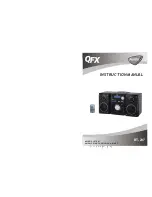
9
Installation
Requirements
Mounting to Engine
Handling
1.
Handle the transmission carefully to avoid damage to the transmission components and to surrounding vehi-
cle components.
2.
Use a hoist or transmission jack that permits precise control of transmission movement during installation.
Mounting to Engine
1.
Use the three transmission lifting eyes provided, the lifting eye position must not be changed on the transmis-
sion.
Note:
For lifting eye and sensor retaining bolt locations, see Appendix II. These bolts can not be used for brackets or for
any other purpose.
2.
Use a three point lift chain or transmission jack with a minimum capacity of 1 TON.
3.
Adjust lift chain or transmission jack to obtain the same relative angle as the engine.
4.
Align the input shaft splines and the drive adapter splines to mesh and push the transmission into the flywheel
housing. Pushing by hand should be the only force required to seat the transmission into the housing. If inter-
ference is encountered, move the transmission away and investigate the cause
5.
Align the clutch housing bolt holes with the engine flywheel housing bolt holes and install all capscrews finger
tight.
Note:
The clutch housing must be flush against the engine flywheel housing before tightening any capscrews. Do not
use the capscrews to seat the housing.
6.
Tighten four mounting capscrews at 90° intervals around the clutch housing, then tighten the remaining trans-
mission mounting capscrews using the recommended torque specifications.
Note:
Do not tighten any mounting capscrews until all capscrews have been installed finger tight. Do not remove the
transmission support chain or jack until all mounting bolts have been tightened.
Output Yoke Installation
Note:
The output yoke/flange may be supplied with the transmission. However, if the output yoke/flange is not supplied
or must be replaced, the following procedure should be followed. (Refer to TRSM-0110.)
1.
Select the proper output yoke per specified application, remove plastic cover, and inspect the seal surface for
damage or contamination. Do not use the yoke if the seal surface is damaged (dents, nicks, scratches, etc.).
2.
All contamination (styrofoam particles, dust, dirt, rust, etc.) on the machined surface of the yoke must be
wiped off or removed prior to installation.
3.
Place the yoke over the transmission output shaft end and rotate it to line up the splines. Take care not to
bump any machined surface of the yoke against the output shaft. Push the yoke all the way onto the output
shaft and onto the seal with one continuous motion.
4.
Thread the tailshaft nut onto the tailshaft until nylon insert is engaged on the tailshaft thread. Secure yoke and
tighten the tailshaft nut to 300-350 lbs-ft.













































